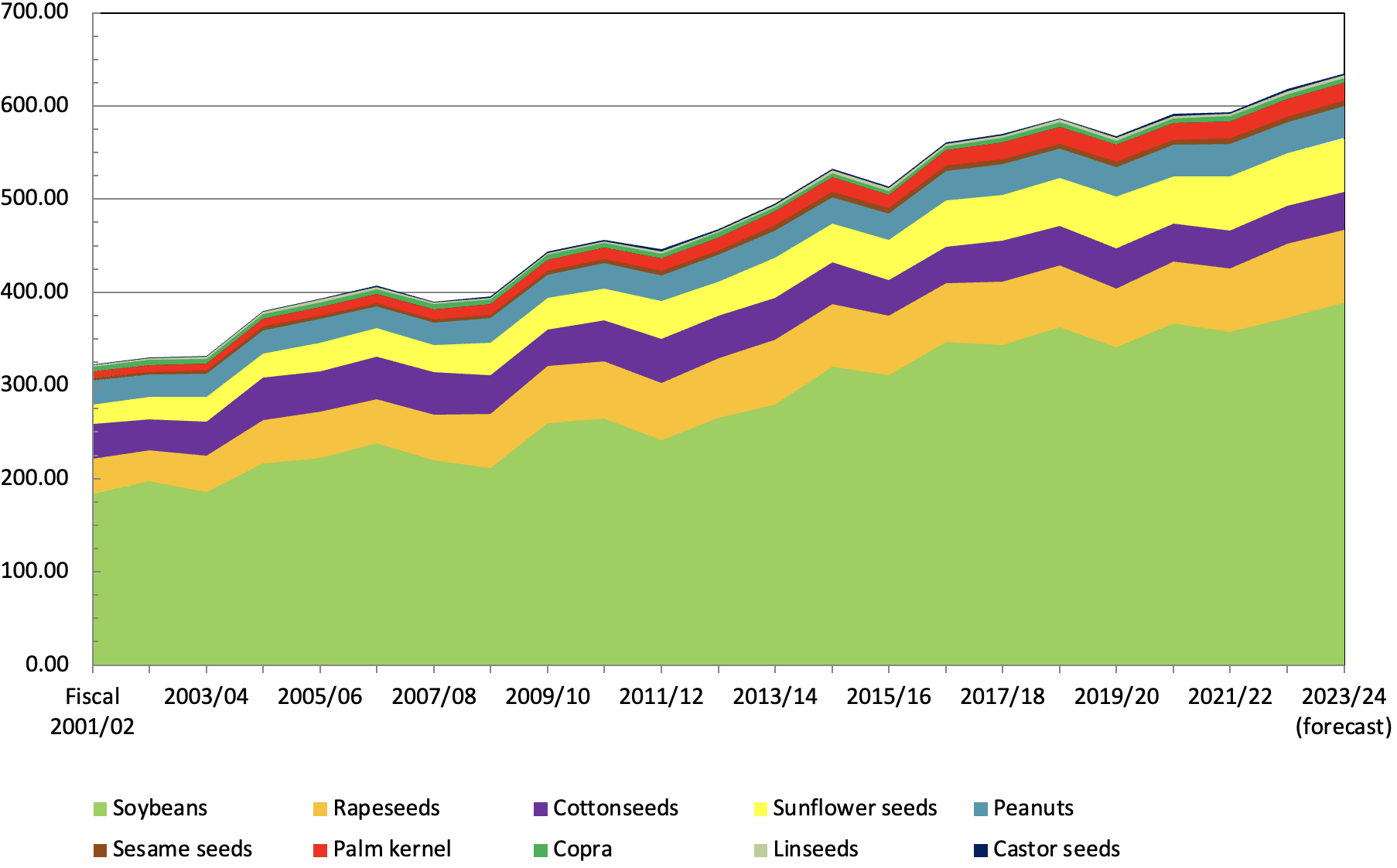Oilseeds are the most important ingredient in vegetable oil. Oilseeds are produced in countries throughout the world and come in diverse varieties. In some cases, vegetable oil is extracted from surprising types of seeds. Therefore, it is impossible to assess all types of seeds used as an ingredient for oil. However, statistics are available for the main oilseeds (10 types) traded internationally.
Global production of main oilseeds is increasing in conjunction with greater demand for oil by an expanding global population. The production of oilseeds is influenced by climate fluctuations and seeding techniques used by farmers. In particular, regions which are appropriate for the production of oilseeds are also appropriate for production of other agricultural products. Therefore, producing farmers must consider how to allocate crops and utilize their limited farmland to maximize operating efficiency. This influences decision-making for production.
Producing farmers compare the economic feasibility of oilseeds and other crops based on indices such as market prices several months prior to seeding. Then, they select their crops by considering labor allocation and the farming equipment which they own. Furthermore, they consider climate condition such as the temperature and soil moisture during the seeding period, and then make a final decision on the seeding area for each crop. Even after seeding, if weather conditions are unfavorable and the seeds fail to germinate, farmers will hurriedly switch to another crop. Once seeding has been completed, the production amount and quality are determined by the temperature, sunlight, and moisture during crop growth.
The global production amount for oilseeds is shown in Table 1. As you can see, the production amount decreased from 2007-2008 to 2008-2009 and has increased since from 2009-2010. These changes were significantly affected by a decrease in soybean production in the United States in 2007-2008 and a decreased in soybean production in South America in 2008-2009. Also, as a result of global credit anxiety, investment capital flowed into the agricultural crop market. In 2007-2008, international prices for crops such as corn, wheat and oilseeds rose to record highs. Afterwards, the prices fell suddenly. Among these drastic fluctuations, even after prices fell, the price of oilseeds has not returned to the level price to the price increase. This means that relatively high prices have been maintained. Therefore, oilseeds have maintained economic superiority when compared to other crops. Farmers increased the production of oilseeds, resulting in the rise in production in 2009-2010. Afterwards, in 2011-2012, soybean production in the United States has declined slightly due to inclement weather. This was followed by a significant decrease in soybean production in South America. Then, in fiscal 2012-2013, the United States was struck by the worst drought in 56 years. This inflicted severe damage on crops such as corn. Consequently, the stringent international demand for oilseeds increased and crop prices rose again. The phenomenon in which corn and soybeans reached new historical highs. However, thanks to rains brought by hurricanes, the soybean crop in the United States escaped a major decrease in production. This was followed by shift to increased soybean production in South America, resulting in an increase in the amount of oilseed production in 2012-2013 when compared to the previous fiscal year. Afterwards, production generally increased from 2013-2014 to 2018-2019. Despite decreased production in 2019-2020, production maintained a high level. Since 2020/2021, production has trended toward recovery and increase, and has maintained a high level. In terms of background factors, the increased demand for soybean oil as a biofuel is leading to a heightened desire among farmers to increase soybean production. The international price of vegetable oil is at a higher level than ever before, due to the continued increase in food demand due to factors such as global population growth and demand for vegetable oil as a renewable fuel.
Soybeans account for more than half of the approximately 600 million tons of oil seeds that are produced globally. Therefore, it is no exaggeration to say that the global oilseed market is driven by soybeans. It is common for international prices for oilseeds to move in parallel with price fluctuations for soybeans.
Figure 1: Changes in global oilseed production
(Unit: One million tons)

Source: Oil World Report by ISTA Mielke Corporation (2023-2024 and other versions)




